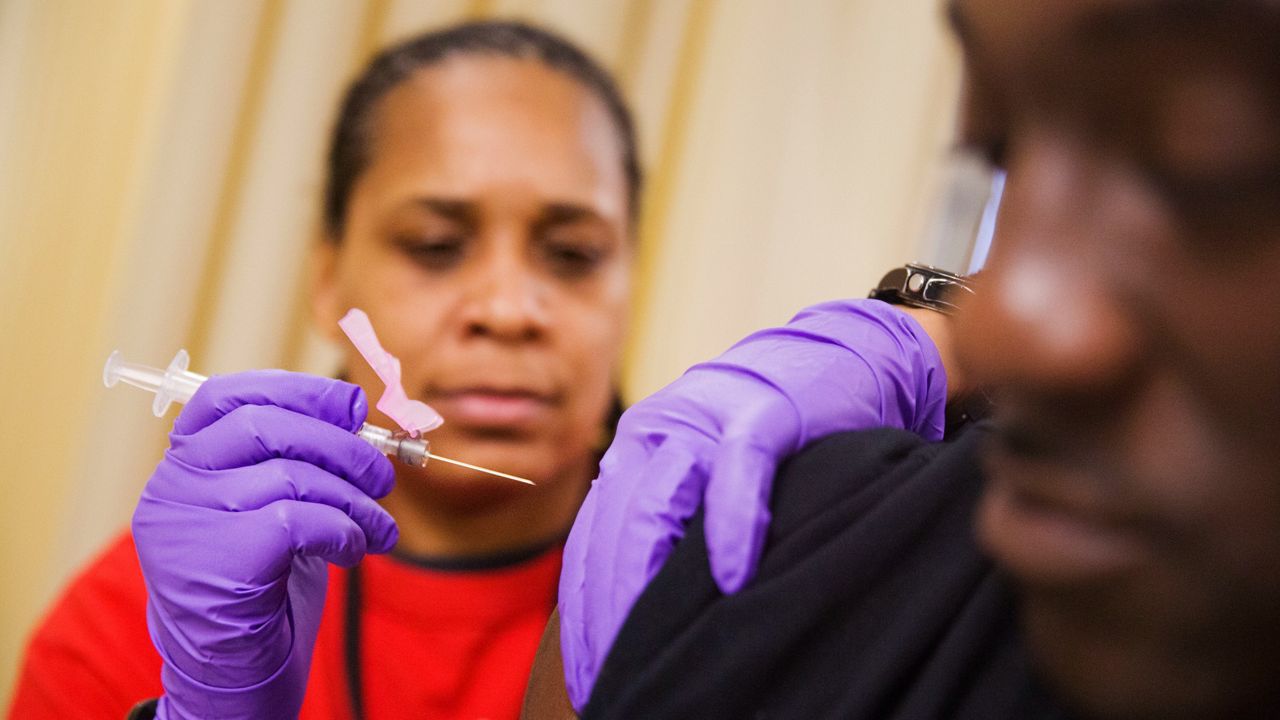A new study by the Centers for Disease Control and Prevention shines a light on the racial and ethnic disparities in both flu hospitalizations and vaccinations in the United States.
What You Need To Know
- A new study by the Centers for Disease Control and Prevention shines a light on the racial and ethnic disparities in both flu hospitalizations and vaccinations in the United States
- During the last flu season, 54% of white and Asian American adults received flu shots, compared to 42% of Blacks, 38% of Hispanics and 41% of American Indian and Alaska natives
- Black adults were 80% more likely to be hospitalized for the flu than whites, much higher than American Indians/Alaska natives (30% higher than whites) and Hispanics (20% higher)
- Federal health officials say there are several reasons for lower vaccine uptake among certain minority groups, including lack of access to health care and medical insurances, missed opportunities for vaccination — for example, during routine medical appointments — misinformation, distrust, and racism
The study, released Tuesday, found that Black, Hispanic and American Indian/Alaska native adults in the U.S. are more likely to be hospitalized with the flu but also are less likely to be vaccinated than white and Asian Americans.
During the last flu season, 54% of white and Asian American adults received flu shots, compared to 42% of Blacks, 38% of Hispanics and 41% of American Indian and Alaska natives.
Although, the relationships between hospitalization and vaccination data are not proportional. Most glaring is that Black adults were 80% more likely to be hospitalized for the flu than whites, much higher than American Indians/Alaska natives (30% higher than whites) and Hispanics (20% higher).
The study was based on hospitalization rates from 2009-22 and flu vaccination coverage data from 2010-22.
Each year, millions of Americans are infected by the flu, resulting in hundreds of thousands of hospitalizations and tens of thousands of deaths. The CDC recommends everyone 6 months of age and older receive a flu shot each year.
Federal health officials say there are several reasons for lower vaccine uptake among certain minority groups, including lack of access to health care and medical insurances, missed opportunities for vaccination — for example, during routine medical appointments — misinformation, distrust, and racism.
The CDC says its working to eliminate disparities by addressing vaccination barriers. For instance, Houry said health officials are partnering with community organizations and trusted messengers to help promote flu shots. Doing so will help build trust in the vaccines, increase access to them and combat misinformation, she said.
National vaccination campaigns can help solve those same issues, Houry said. The CDC is working with the Ad Council and the American Medical Association for the third consecutive year to target Black and Hispanic Americans. Surveys showed the previous campaigns reduced concerns about the shots from 43% to 33% among Black adults and from 41% to 32% among Hispanic adults.
Meanwhile, the CDC made a series of recommendations to help boost vaccination rates. It’s asking health care providers to strongly recommend flu shots and make “culturally appropriate vaccine recommendations,” such as using materials with images representative of those in the community. The agency is urging state and local governments to identify and remove barriers to vaccination and work with community groups to increase access and convenience to the shots. And it’s recommending that everyone not only get vaccinated but to encourage others to do so as well.
“Vaccination is the best defense we have against the worst outcome of getting the flu,” Houry said.



